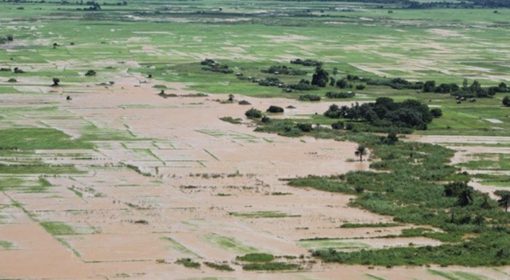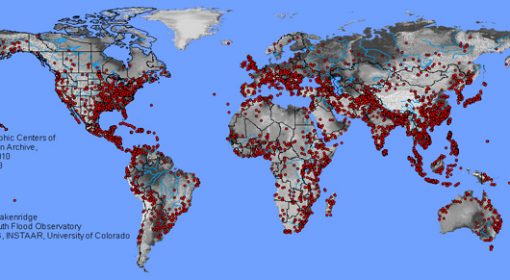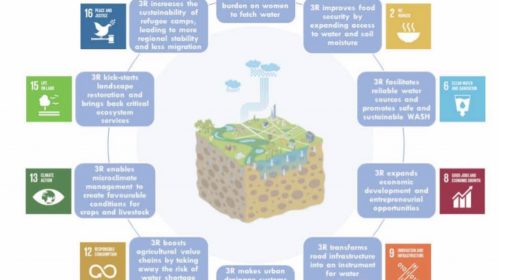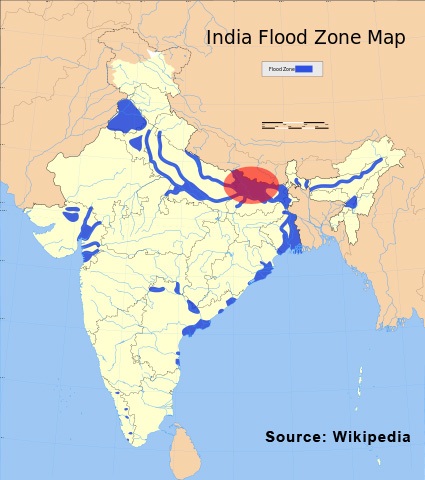 Bihar in eastern India is the country’s most flood-prone state. Every year, about 76% of the population and 73% of the geographical area are faced with a real possibility of floods[1]. According to the most conservative estimates [2], between 1979 and 2011, floods in the state have led to:
Bihar in eastern India is the country’s most flood-prone state. Every year, about 76% of the population and 73% of the geographical area are faced with a real possibility of floods[1]. According to the most conservative estimates [2], between 1979 and 2011, floods in the state have led to:
- 6912 deaths,
- Damage to around 18.6 million hectares of cropped area,
- Damage to houses worth 600 million dollars, and
- Loss of public property worth 325 million dollars
The floods occur during the monsoon season in South Asia. Increased discharge in the Koshi river, that flows through Nepal and India, is the main source of the flooding. Management of this discharge has been a major point of contention between the two countries.
The phenomenon is recurring and near-inevitable. The provincial government has set up departments and funds dedicated to flood relief. For a large part of the population, submerged homes, relief camps and helicopters dropping food packets are part of an annual trauma they have to go through.
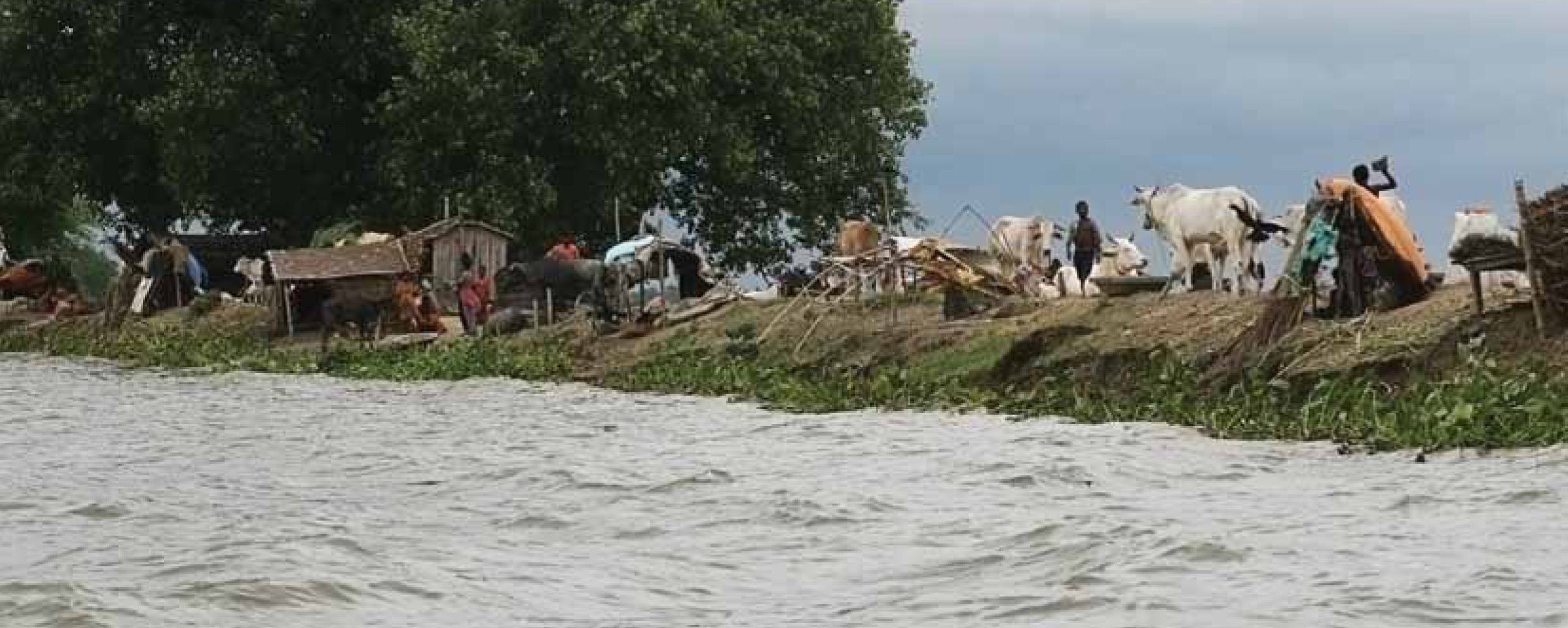
Ironically, it is during this period of excess rains and excess flooding that access to safe drinking water and sanitation emerge as the biggest problems. Hand pumps are the main means through which people in the region access drinking water. During floods, most of them get ‘drowned,’ silted up or even damaged by the sheer force of the waters. Water logging creates stagnant pools that people often have to use for drinking, washing and defecating. This drastically increases the risk of diseases like cholera, typhoid, malaria, dengue and yellow fever.
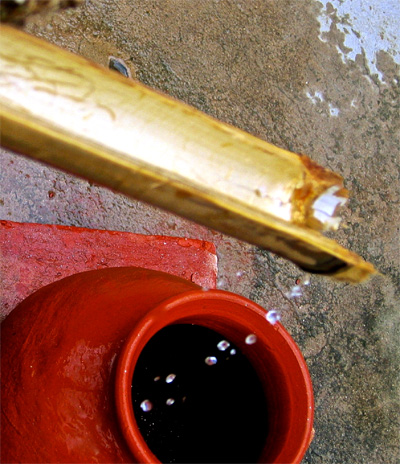 During the monsoons the area receives over 1250 mm of rains over 56 days. This represents a large amount of drinkable water falling on flood victims and relief camps facing acute shortage. It makes a lot of sense to try and harvest it.
During the monsoons the area receives over 1250 mm of rains over 56 days. This represents a large amount of drinkable water falling on flood victims and relief camps facing acute shortage. It makes a lot of sense to try and harvest it.
Megh Pyne Abhiyan (Hindi for ‘Cloud Water Campaign’) is a network of local NGOs and concerned citizens trying to promote the idea in the region. They advocate the adoption of techniques developed around a basic idea: harvest the rainwater in a hygienic manner and store it in safe, durable facilities. Keeping in mind the constraints of crowded relief camps and marooned houses, the technology is simple and only demands minimal, easily available resources, such as polythene sheets, bamboo, ropes and sand. At times, the setup is as simple as a polythene sheet tied to a bamboo frame (like the roof of a typical shelter in a relief camp).
Floods also pose unique sanitation challenges. Open defecation is common in North Bihar. The practice is hazardous enough in the dry season; the overwhelming presence of water during floods makes the transmission of fecal pathogens all the more rapid. With little dry ground to defecate upon, people relive themselves from trees, boats, hanging toilets made of bamboo… into the floodwaters that also have to be used for household needs, animals and washing up. And drinking.
The problem is compounded by the crowded, chaotic conditions at relief camps.
Conventional flush toilets are rendered useless as water enters their pits/sceptic tanks and choke the whole system. Also, given the way they handle fecal matter (mixing urine and faeces and storing them below ground level), they tend to leak it out into groundwater and surface water sources. Besides, they use a lot of water which is scarce in supply in the first place.
Accounting for these issues, Megh Pyne Abhiyan promotes the use of mobile dry toilets that separate urine from faces, and store them hygienically for later use as natural fertilizer and soil regenerator. Being dry, they help economize water use. Being mobile, they can be moved easily to wherever they are needed. They help separate urine and feces and store them, thus preventing indiscriminate disposal in the floodwaters. As all of this happens above the ground level, fecal material does not contaminate groundwater, the main source of drinking water in the region.
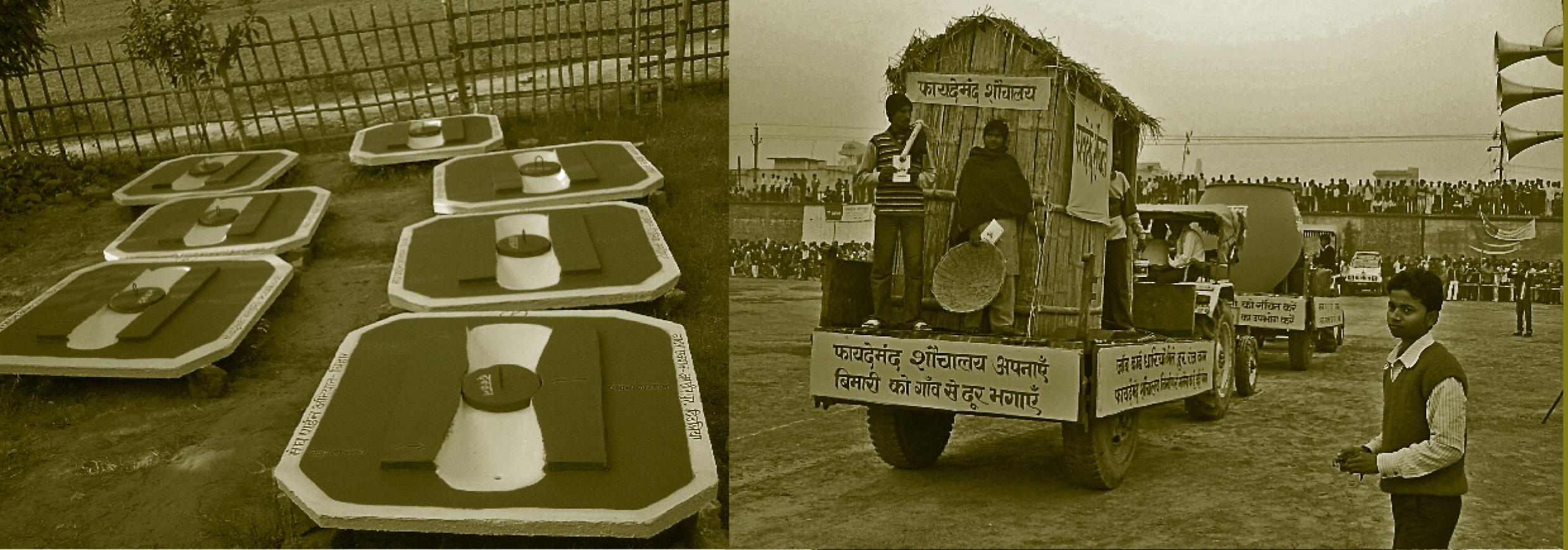
Post-floods: Groundwater
The case for rainwater harvesting, mobile dry toilets and the whole range of related techniques and practices can also be built around better groundwater management, which is equally relevant in the post-floods scenario.
Most of North Bihar comprises of alluvial flood plains, has shallow ground water, has waterlogged soil and is prone to seasonal flooding. Given the hydrogeology, conventional flush toilets that mix urine and fecal matter lead to excreta seeping into aquifers and flowing into rivers/ other water bodies (public sewerage systems in the region are under-developed, with little or no provision for sewerage treatment). Recent studies have found that about 95 Per cent of the waste directly reaches groundwater. Therefore, alternative sanitation solutions such as mobile dry toilets need to be explored.
Uptake
The Rain Water Harvesting and alternative sanitation technologies mentioned above have evolved over a period of time, through a process of continuous trials and feedback from flood-affected communities. Their promotion through North Bihar is an ongoing process, being carried out through a network of grassroots organizations and experts from across India. Of late, flood-vulnerable communities from other parts of the country have shown interest in adopting them.
Usually, it is the poorest who are hit hardest by floods. Therefore, such technologies have to be accessible to them, both in terms of costs and the knowledge related to installation and upkeep. In a deeply divided society such as North Bihar, concerted efforts to reach the lower castes and marginalized communities are a must.
Ironically, the low cost and small scale of such technologies lead to a systemic bias against them. Dug wells, mobile toilets and small rainwater harvesting systems do not stimulate economic activity in upstream/downstream industries the way, for example, a large water treatment plant would. Therefore, they do not find favor with government agencies or businesses.
Are there ways around this bias? Finding some would be key to the adoption of low-cost water and sanitation systems in areas that could benefit from them the most.
Based on inputs by Eklavya Prasad, Managing Trustee, Megh Pyne Abhiyan
Photographs courtesy Eklavya Prasad
{jcomments on}
